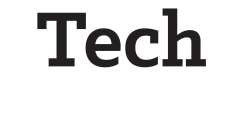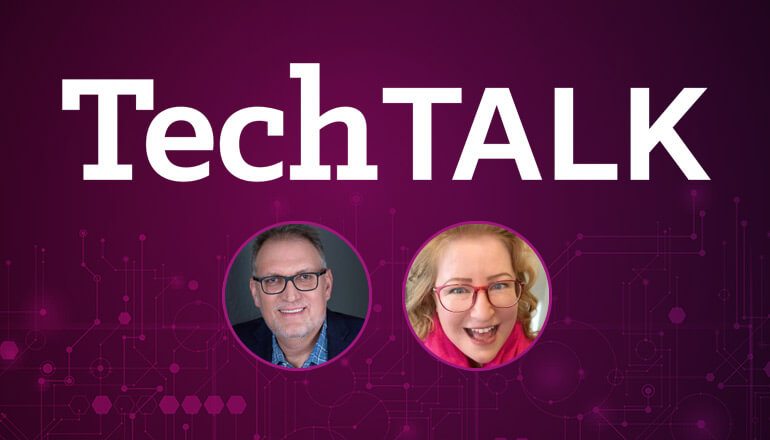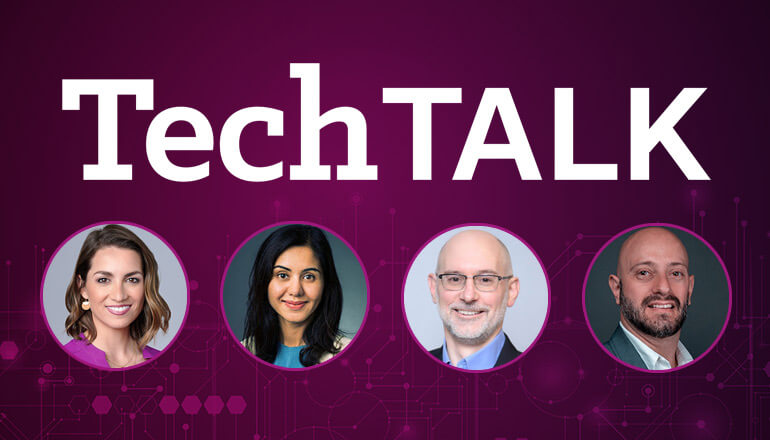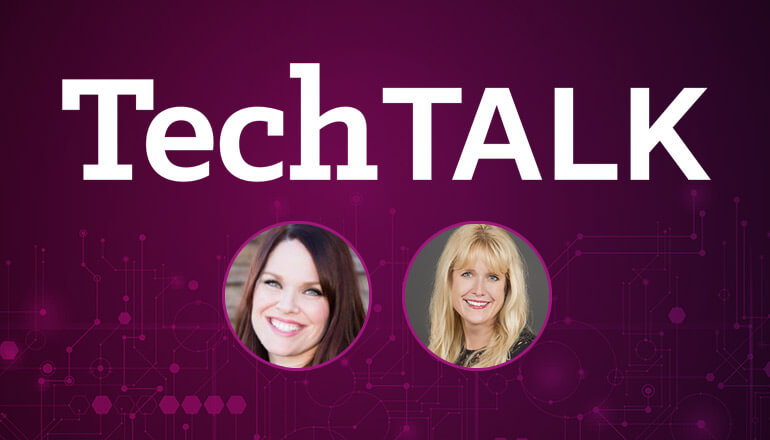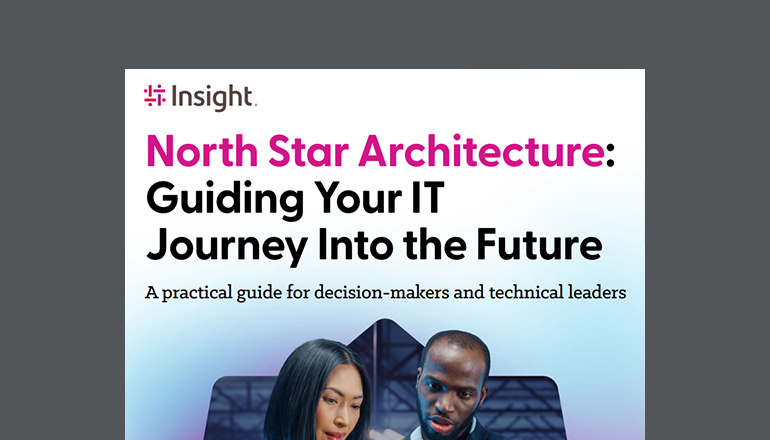Audio transcript:
Insight TechTalk – Connected Platform for Detection and Prevention
Published May 29, 2020
[Music]
STAN: Hey everyone. Thanks for joining us today for this Tech Talk. I have my colleague and teammate and really good friend Jeff Dodge joining us today. I'm Stan Lequin. I lead the Insight Digital Innovation team. Jeff, maybe talk a little bit about yourself and what you do at Insight?
JEFF: Yeah Stan, this is fun. I'm glad we get to do this together. I head up the software platforms team, on your team and we have the unique opportunity to build SAS Platforms around the IoT space for Insight itself.
STAN: Awesome, and then IoT, can you kinda go a little bit into IoT, and some of the business impacts we're seeing with it?
JEFF: Yeah, I mean IoT is thrown around really liberally and the reality is everything is pretty much turning into an IoT device, or Internet of Things device but it's a fancy way of saying a smart device that has some sort of compute capability and some sort of network connection. There's lot of different ways to connect those devices but what we do is we look at how to make all of those devices, those IoT devices or smart devices how to extract the data from them and make it more than just data but make it insights and make it something that someone can actually use in a business setting.
STAN: Perfect, okay, so a connected device that sits within a business and pulls information about a specific, you know, it could be anything right? It could be cameras, it could be devices that sit within manufacturing large scale equipment pulls metrics associated with that, failure rates heat, temperature, pretty much anything. I think you referred to it at telemetry right?
JEFF: Yeah, I mean it's amazing. Almost everything gives off some amount of data these days and even things like, you know, a broiler in a restaurant is giving off some data about its health and its status and individually devices giving off a little bit of data about its own status, it's interesting it's useful, it's helpful, but knowing what's going on sort of in concert, knowing what's going on in business context is much more useful.
STAN: Okay, and I think that's really kinda the concept behind the Connected Platform right. Can you talk a little bit about that?
JEFF: Yeah, so the Connected Platform is really designed. It certainly has IT stakeholders, or technology stakeholders in mind and contemplated but it's really about the business operations folks. The people that are running the line of business day to day. Providing them with, I'll use the cliche 'single pane of glass', but that common user interface so that they know where to find the data in a common and repeatable manner and also that the right data is presented to them. One of the biggest problems with the explosion of IoT everywhere is that there is tons of data so nobody knows what data they should be looking at or who it's supposed to be for. So the connected platform is really around taking a lot of data from a lot of different devices and then smartly weaving that data together creating insights and information beyond just raw data and routing it to the right stakeholder at the right time.
STAN: Perfect, and then I know you've been really busy we've all been really busy with just an explosion of clients that have been connecting with us around the platform and around the specific use case around COVID and detection and prevention. Can you speak a little bit about how we pivoted the platform to support that specific and very important use case and maybe a little bit about what we're doing there?
JEFF: Yeah, you know it's quite fortunate that the platform was ready in the way that it was at the time that it was. It's sort of unfortunate that this amazing use case for utilizing the technology is such a difficult time for the world as evidenced by you and I sitting in our homes right now instead of in our offices but we've been working for years to deploy these IoT solutions, these smart business data-drive solution in different industries from health and life sciences to retail to restaurant and manufacturing. We've been doing this at scale and then all of a sudden March came and the world changed, and people were no longer able to even access these spaces to deploy these solutions and frankly we were all a little nervous. Like what does this mean for business? What's the new normal? And then almost on a dime we realized there was this huge demand for any kind of solution that A) would help people get back to return to work and play as we like to call it and then we have another little acronym that we like that's ASASAP or As Soon As Safely Possible and so all of a sudden our phones were ringing I mean quite literally off the hook. My phone, I have it on mute right now because everybody's trying to figure out how to do this but do it in a smart way. So while Insight has a massive velocity business around providing any technology product hardware or software that a client might need clients were quickly realizing that they didn't just need some sort of thermal camera or an optical model for managing whether or not people were wearing masks. They needed to be able to get that data in a way that they could process and action on and log or not log as they see fit. So the Connected Platform has really become an expression of company policy enforced and updatable through a common UI that takes away the user's discretion if you will or their requirement to rely on their training to figure out what action to take based on the data coming in and gives them, again, that company's enforced policy through a common UI and workflow telling them decision support wise what to do next based on that data coming in.
STAN: So all those devices, you mentioned thermal cameras right? High definition cameras that can allow us to look at using artificial intelligence and machine-learning models. You know are people six feet away? Are people wearing face masks? Right, those types of things. So all that data, if it was just the devices that would be for whoever is sitting in front of that specific device looking at it but really what we're able to do through our platform is connect all those devices in and then start to pull insights through that data do alerting of specific work flows based on a company's specific policies or the back to work policies and regulations within a state. Is that kind of how it works Jeff?
JEFF: Yeah, I mean that's exactly right. You need to be able to manage all of that data coming in be able to enforce policy, and often times clients are just learning about what it means to have opt-in requirements around thermal scanning what it means to have required contact tracing or requiring sort of a quick triage a touch base through a chat bot or through a sort of survey style to understand if their employees are in a safe place or at risk and who've they've come in contact with. There's all sorts of policy decisions and interestingly I sit our return to work committee at Insight and we've got 10,000 teammates that we're very much concerned with but we also want to help them get back to the work that's so important, and these considerations are not just technology considerations, they're very much driven by legal and HR and operations, and so in concert with them we figured out how to setup the Connected Platform so that these things are configurable. So one week, literally these things are changing week to week and day to day, you might say we don't want to do any sort of facial recognition. It's a very hot button issue and that's reasonable right. Many companies do not want to do that and I can appreciate why they don't. So you can turn that off. If you do need facial recognition you can turn it on. If you do want to capture sort of like image evidence of the types of scenarios you just discussed. Are people within the workplace coming within six feet of each other? We can either just report on the fact that it happened we can report on the folks that were involved we could also send out an alert that could be some sort of visual or auditory signal at the time that it happens to advise them of a better practice to be observing or we could alert some sort of person who's in charge of making sure that there's adherence to those policies but we don't have to do any of that. That is all configurable within the system. A lot of clients just want to have sort of a generic report so they understand the trends within the workplace not necessarily a report on individuals that may be adhering or not as closely adhering to that policy.
STAN: Yeah a ton of power there, and then I know other features obviously device health, battery all those things are all things that our systems report on as well. You know Jeff, you know what would be great is I know you had mentioned that you're on our back to work team. Can you walk through a little bit about what we're doing and how we're leveraging the technology?
JEFF: Yeah, so we are actually deploying this. It's in our Hanover Park facility right now. It's, I think, about a 400,000 square foot labs and shipping facility, warehousing facility in Hanover Park outside of Chicago and that's really where the largest number of Insight teammates is still working every day to provide mobile enablement technology solutions whether it be hardware or software for our clients at scale around North America and beyond. So those employees, I mean really really heroic people are still going to work every single day working six feet apart but in close proximity wearing face masks, wearing gloves where appropriate following all of those policies. We've already deployed our thermal cameras there to observe. A well thought through process for admitting people into the facility, taking a thermal read on their current state, and then I can't go into specific details around our very changing and monitored policy, but we take the correct actions through the platform to make sure that those people are treated in the least disruptive way and the most safe way possible.
STAN: Oh I appreciate that. I know our teammates do as well and as you said globally our organization is providing essential IT assets to frontline workers and essential works. So as you said, I just really appreciate everything that team is doing and glad we can impact them in a positive way. Great thing to talk about. Great capability that you and the team have built. Super proud to be a part of this organization and be your teammate and thanks for everything.
JEFF: Thanks for being my friend Stan, it's been a blast.
[Music]
